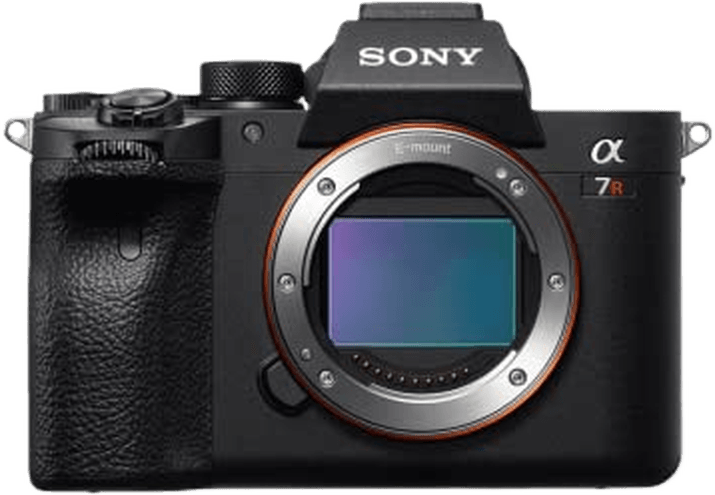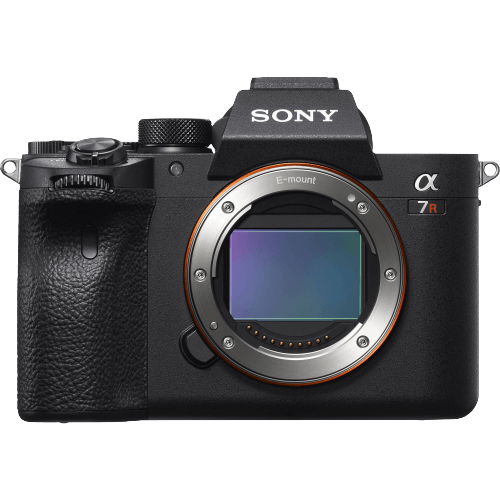Sony a7R IV vs a7R IVA Comparison
Sony a7R IV

Sony a7R IVA

The Sony a7R IVA comes out on top with a score of 85/100, just one point ahead of the Sony a7R IV at 84/100. Both cameras are mirrorless and were launched at the same price of $3500. They share identical dimensions (129 x 96 x 78mm) and weight (665g / 1.47lbs), making them equally portable and user-friendly.
The a7R IVA’s higher score reflects its improved performance over the a7R IV. However, the a7R IV still holds its own and may have certain advantages depending on individual preferences.
In the end, the Sony a7R IVA is the better camera due to its enhanced features and capabilities, while the a7R IV remains a solid choice for those seeking a high-quality mirrorless camera.
Sony a7R IV vs a7R IVA Overview and Optics
The Sony a7R IV and Sony a7R IVA are tied in our optics comparison, both scoring 85/100. These cameras share numerous specifications, including a 61-61.2 megapixel count, 10 fps shooting speed, CMOS sensor type, Bionz X processor, 99 DXOMARK sensor score, full-frame sensor size, Sony FE lens mount, and image stabilization.
Despite the identical score, the Sony a7R IV holds a slight edge in megapixels with 61.2, compared to the a7R IVA’s 61 megapixels. This difference, though minimal, means the a7R IV can capture marginally more detail in images. However, the a7R IVA still performs exceptionally with its 61-megapixel count.
On the other hand, the Sony a7R IVA matches the a7R IV in shooting speed, sensor type, processor, DXOMARK sensor score, sensor size, lens mount, and image stabilization. These shared specifications demonstrate that the a7R IVA is on par with the a7R IV in terms of overall performance and quality.
Given the nearly identical specifications, it is difficult to declare a clear winner between the Sony a7R IV and the a7R IVA. Both cameras excel in their optics performance, with only a slight advantage to the a7R IV in terms of megapixels. The shared features, such as shooting speed, sensor type, processor, and image stabilization, ensure that both cameras provide high-quality results. Therefore, either camera would be an excellent choice for photographers seeking top-notch optics performance.
Sony a7R IV vs a7R IVA Video Performance
The Sony a7R IVA outperforms the Sony a7R IV in terms of video capabilities, scoring 91/100 compared to 70/100. Both cameras share common video features, such as 4K maximum video resolution and 3840 x 2160 maximum video dimensions. Additionally, both cameras offer built-in time-lapse functionality.
The Sony a7R IVA surpasses the Sony a7R IV with its higher maximum video frame rate of 120fps, compared to the 30fps offered by the Sony a7R IV. This higher frame rate enables the a7R IVA to capture smoother, more detailed slow-motion video, making it a better choice for videographers who require high-quality slow-motion footage.
The Sony a7R IV, despite its lower video score, still provides solid video performance. However, it does not possess any unique advantages over the a7R IVA in this category, making it less preferable for video-focused users.
Considering the video capabilities of both cameras, the Sony a7R IVA proves to be the superior choice for those prioritizing video performance, due to its higher frame rate. Meanwhile, the Sony a7R IV remains a viable option for users seeking a reliable camera with standard video features, but it does not excel in this area when compared to the a7R IVA.
Sony a7R IV vs a7R IVA Features and Benefits
The Sony a7R IVA outperforms the Sony a7R IV in features, scoring 85/100 compared to the latter’s 83/100. Both cameras share several specifications, including a 3-inch screen size, touchscreen capability, flip screen, absence of GPS, and the presence of WIFI and Bluetooth.
The winning camera, Sony a7R IVA, surpasses its counterpart with a higher screen resolution of 2,360,000 dots, compared to the Sony a7R IV’s 1,440,000 dots. This increased resolution provides users with a sharper and more detailed display, enhancing the overall shooting experience.
In contrast, the Sony a7R IV does not have any specific advantages over the Sony a7R IVA, as both cameras share the same features apart from screen resolution. The 2-point difference in the feature score is solely due to the improved screen resolution of the Sony a7R IVA.
Considering the points discussed, the Sony a7R IVA’s higher screen resolution makes it a better choice for photographers and videographers seeking a more detailed display. The Sony a7R IV, while still a strong contender, does not offer any distinct advantages over its newer counterpart. Therefore, users looking for an upgrade or a camera with superior features should opt for the Sony a7R IVA.
Sony a7R IV vs a7R IVA Storage and Battery
The Sony a7R IV and Sony a7R IVA tie in storage and battery performance, both scoring 79/100. They share identical specifications in this department, including two memory card slots, compatibility with SD/SDHC/SDXC (UHS-II) cards, a battery life of 670 shots, and the use of NP-FZ100 batteries. Additionally, both cameras offer USB charging capabilities.
Neither camera outperforms the other in terms of storage and battery. They both provide ample memory card options and a satisfactory battery life for various photography needs. The USB charging feature is a convenient addition, allowing users to charge their cameras on-the-go.
In this comparison, neither the Sony a7R IV nor the Sony a7R IVA has a significant advantage over the other. Both cameras provide reliable storage and battery performance, making them suitable choices for photographers who prioritize these features.
Sony a7R IV vs a7R IVA Alternatives
We hope our specs comparison has been helpful to you. If you’re still unsure which model to choose, you can have a look at some popular comparisons first:
- Sony a7 III vs Sony a7R III
- Sony a7 II vs Sony a7R
- Canon R5 vs Sony a7R IV
- Sony a7R II vs Sony a7S II
- Sony a1 vs Sony a7R IV
- Sony A7 III vs Sony a7R IV
Or, our recent Sony a7R III review or Sony a1 review will give you some detailed information on mirrorless Sony models!
